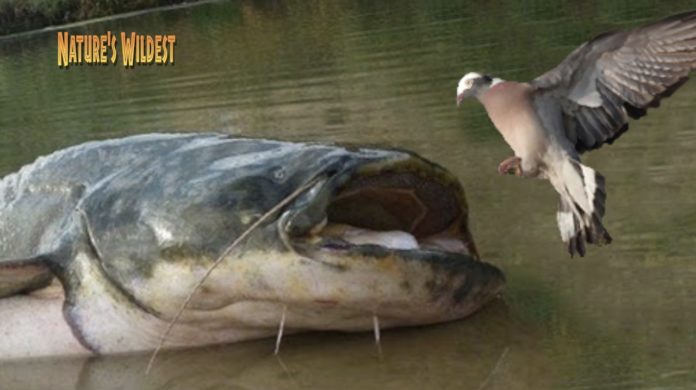In an unusual display of predatory adaptation, giant Wels catfish have been snatching pigeons off the shores of the River Tarn in the town of Albi in Southwestern France. This activity has captured the fascination of both locals and scientists alike, highlighting the adaptive prowess of these introduced species. But is it really adaptation, or did they just learn it watching the discovery channel?
European Wels catfish, known scientifically as Silurus glanis, can grow to lengths of over 9 feet and weigh more than 300 pounds, making them the largest freshwater fish in Europe. Originally from Eastern Europe, these fish were introduced to Western European rivers in the 1970s for sport fishing. However, their presence in new ecosystems has led to some surprising behavioral adaptations.
The behavior in question involves these catfish beaching themselves on land to hunt for pigeons that gather on small gravel islands or along the riverbanks. This hunting technique, which mimics the beaching behavior of killer whales capturing seals in Argentina on the Discovery channel, was first documented in 2012 by researchers from the University of Toulouse. They observed that the catfish would lunge out of the water, grab a pigeon, and swiftly wriggle back into the river to consume their catch. The success rate of these attacks was noted to be around 28%.
While this behavior is intriguing, it also raises concerns about the ecological impacts of introducing non-native species into new environments. The Wels catfish’s predation on local pigeons and other wildlife has some saying the catfish should be eliminated, while others say the less pigeons the better.





